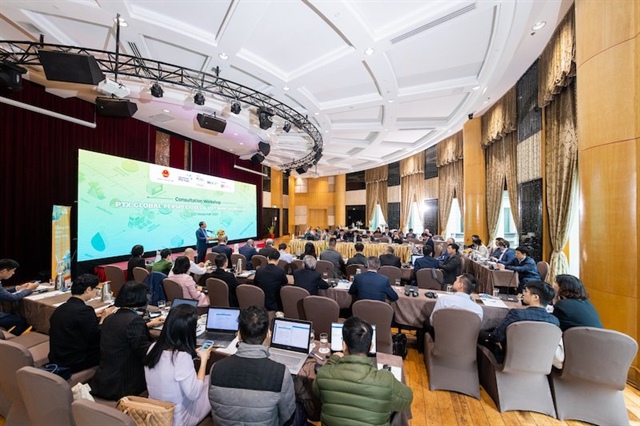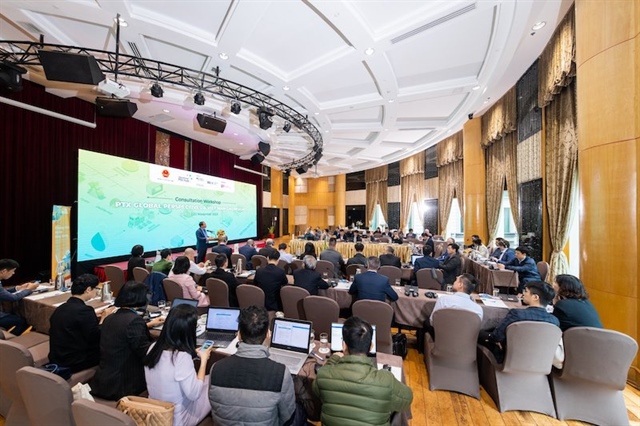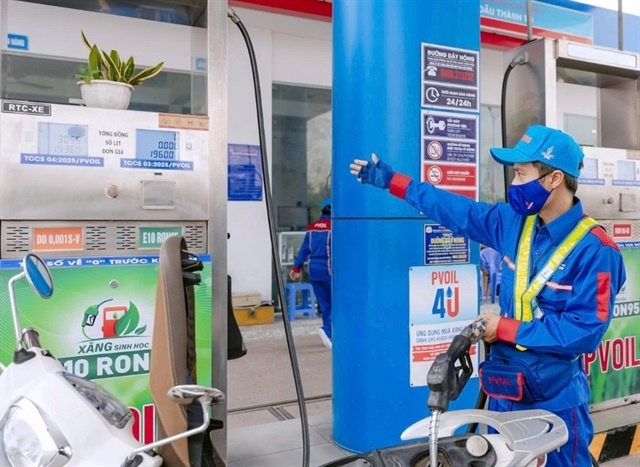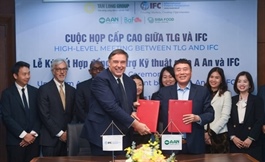Vietnam's green hydrogen export potential reaches 23 million tons: Experts
Vietnam's green hydrogen export potential reaches 23 million tons: Experts
Vietnam's orientation is to focus on offshore wind power in combination with other renewable energy sources to produce new energy for domestic demand and export.
Vietnam's green hydrogen export potential from solar and wind power can reach 23 million tons per year, experts predicted at a consultation workshop on "PtX global perspectives and Vietnam GH2 insights" under the PtX outreach project funded by the German Federal Ministry of Economics and Technology.
With about 85,000 km2 of land available for renewable energy development, Vietnam can install 3,400 GW of solar power and 840 GW of onshore wind power. The largest global markets for hydrogen imports include South Korea, Japan, Germany, the UK, France and Italy.

An overview of the event. Photo: GIZ |
Speaking about Vietnam's National Hydrogen Strategy at the November 22 event in Hanoi, Tran Thanh Tung, Deputy Director General of the Department of Oil, Gas and Coal under the Ministry of Industry and Trade, said that hydrogen is considered a priority energy source to replace fossil fuels and is expected to be a significant part of the country's energy mix in the future.
Vietnam's orientation is to focus on offshore wind power in combination with other renewable energy sources (solar power, onshore wind power) to produce new energy (hydrogen, green ammonia) for domestic demand and export, he added.
The workshop also shared findings on the potential for ammonia use in Vietnam's power sector and the technical requirements for power-to-x (PtX) and green hydrogen development in the country.
The development of PtX and green hydrogen must be based on the industry's sustainability criteria framework (in four areas of environment, economy, society and governance), while meeting the national sustainable development goals, they stressed.
It's recommended that for the sustainable development of the national industry, Vietnam needs to establish standards and certifications for the PtX industry and make efforts to pilot and operate a carbon market.
In addition, it is necessary to prepare local professionals, attract talents from abroad, develop infrastructure, learn international technology, and provide financial support for domestic PtX projects.
David Jacob, an international consultant IET/GFA, said that the development orientation of green hydrogen should prioritize low-hanging fruit to minimize risks. He recommended investing in industries with no alternative to green hydrogen or those already using hydrogen, such as fertilizer production or refinery desulphurization.
International experts also provided recommendations on medium and long-term strategies for the oil and gas industry, including detailed LCOX analyses at selected sites; establishment of RE & GH2 development zones, space transportation corridors; establishment of areas focused on renewable energy and green hydrogen development and space transportation corridors; a detailed study on marine bunker fuels; study on PtX competitiveness (for domestic demand and export market); analysis of the PtX value chain; and others.

Markus Bissel, PtX Outreach Project Director, speaks at the event. |
"To achieve the net zero target by 2050, Vietnam needs, in addition to expanding renewable electricity generation and increasing energy efficiency, special measures in the transport, energy and manufacturing sectors, one of which is the use of green hydrogen produced from renewable energy and its derivatives," said Markus Bissel, PtX Outreach Project Director.
GIZ, in cooperation with the international PtX Hub in Berlin, is implementing the PtX Outreach project to shape the framework conditions for PtX production, securing financing, building global networks and partnerships, and tapping country and market potential for a sustainable PtX and green hydrogen industry, he added.




























